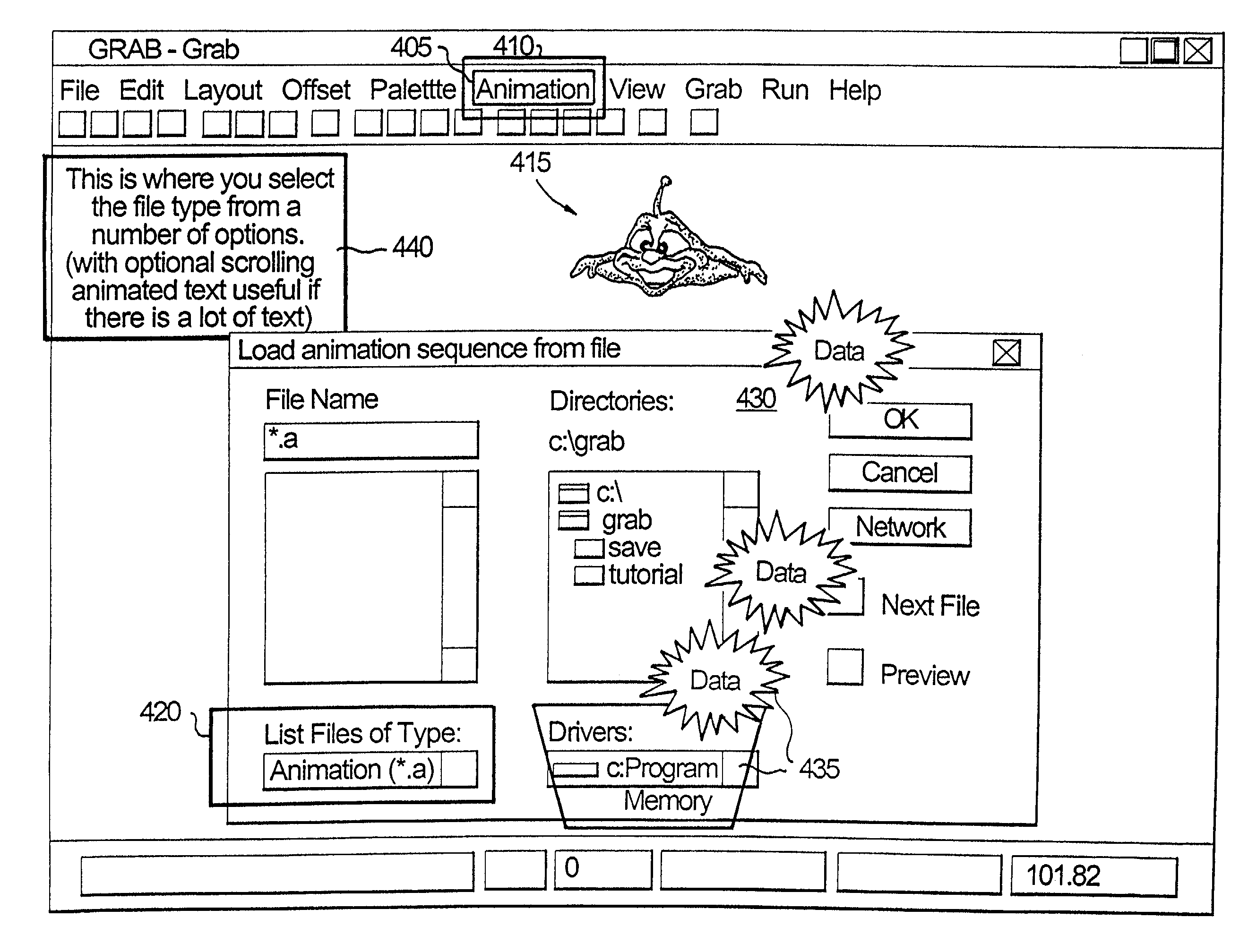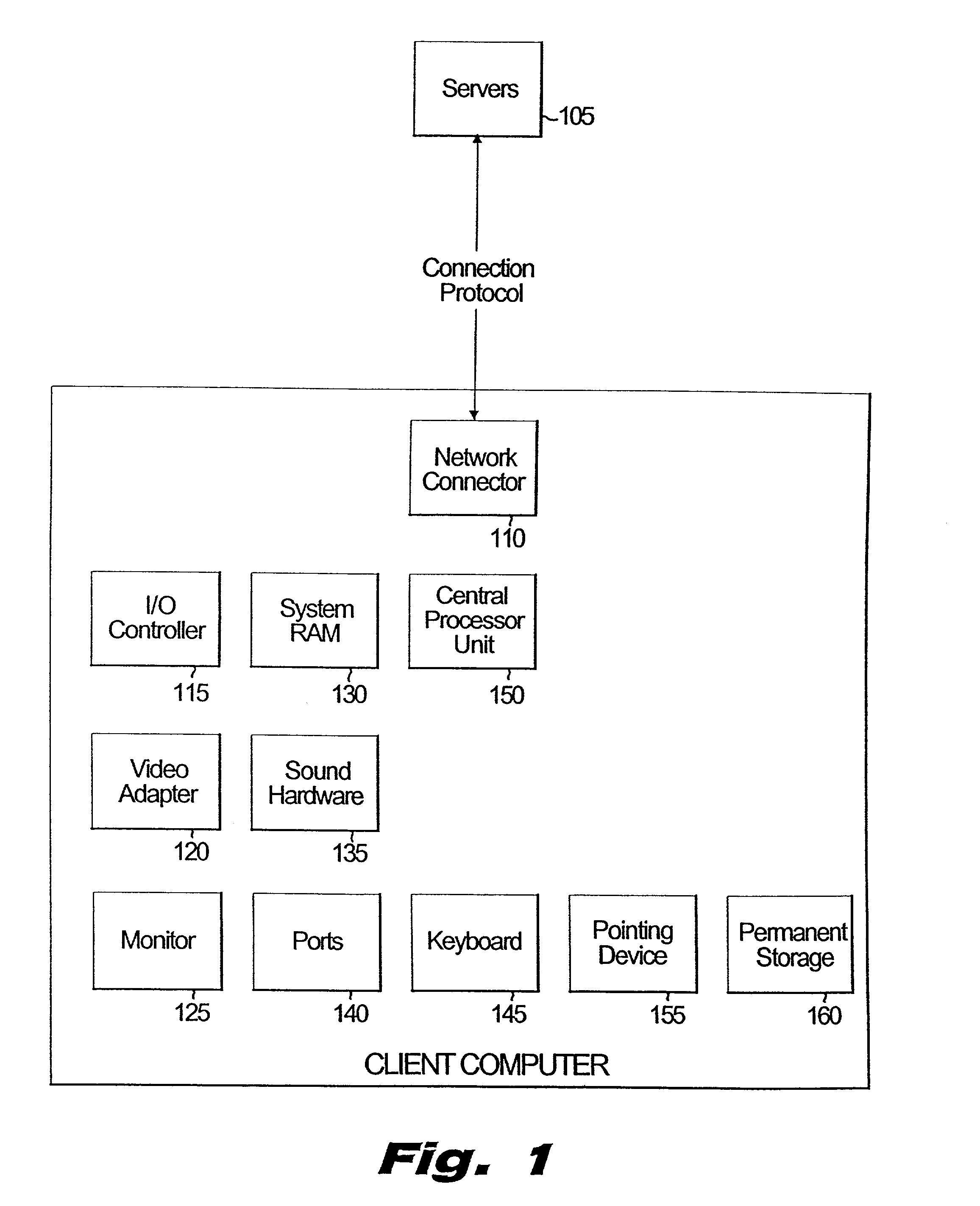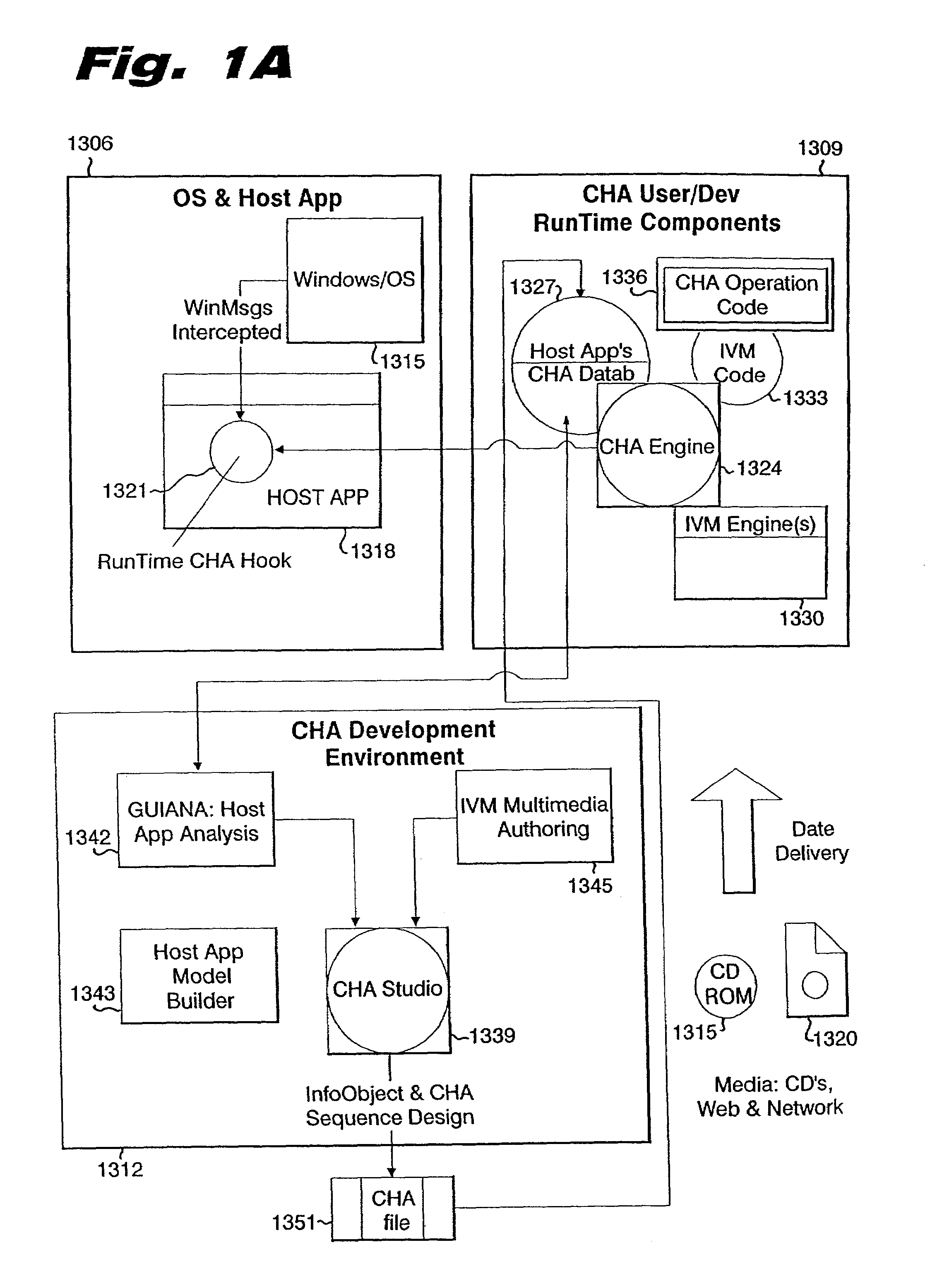System and method for dynamic assistance in software applications using behavior and host application models
a dynamic assistance and software application technology, applied in the field of software for assisting users, can solve the problems of reducing the ability of a user to learn and thoroughly understand such application software, the complexity and shear volume of diverse features can be overwhelming, and the interfaces of applications have increased the possibility of confusion to the user, so as to facilitate the production of assistant sequences, enhance the effect of explanation or material expression, and extend the effect of
- Summary
- Abstract
- Description
- Claims
- Application Information
AI Technical Summary
Benefits of technology
Problems solved by technology
Method used
Image
Examples
Embodiment Construction
[0033]FIG. 1 illustrates a client computer and server for implementing and operating the disclosed Cooperative Help Assistance (CHA) system and method on or with a client computer. For example, the CHA system and method may be an application program or software executed by the client computer, which may be a personal computer, workstation, or other computing platforms. The Server 105, another computer distinguished by its server software, distributes data to many client computers and complements client processing tasks. The Network Connector 110 provides connectivity to external computers primarily servers. A standard connection protocol transmits and receives data in any format between remote computers. The client computer may include a number of subsystems connected together by an internal system bus. Instructions included in the system RAM 130 are executed by the Central Processing Unit 150.
[0034]Numerous external devices are connected to the Input / Output (I / O) Controller 115 via...
PUM
 Login to View More
Login to View More Abstract
Description
Claims
Application Information
 Login to View More
Login to View More - R&D
- Intellectual Property
- Life Sciences
- Materials
- Tech Scout
- Unparalleled Data Quality
- Higher Quality Content
- 60% Fewer Hallucinations
Browse by: Latest US Patents, China's latest patents, Technical Efficacy Thesaurus, Application Domain, Technology Topic, Popular Technical Reports.
© 2025 PatSnap. All rights reserved.Legal|Privacy policy|Modern Slavery Act Transparency Statement|Sitemap|About US| Contact US: help@patsnap.com



